The Real Market With Chris Rising – Ep. 12 Gadi Kaufman
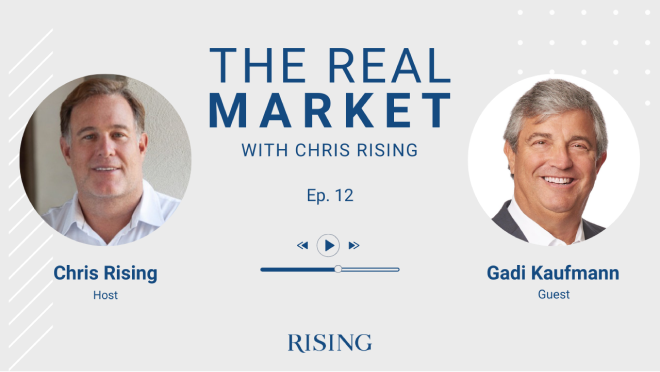
The Real Market With Chris Rising – Ep. 12 Gadi Kaufman
Podcast: Play in new window | Download
0:00:49 CR: Today, I’m talking to Gadi Kaufmann, the managing director and CEO of RCLCO. RCLCO is a consulting firm that also advises pension funds. We have a really engaging conversation, talking about how the business has changed since he left the Israeli Air Force and graduated from UCLA back in 1979, to where we are today and how artificial intelligence is changing the business, how data analytics is changing the business. But also we talk in great detail about where we are in the market cycle and what kind of advice and counsel that Gadi gives to his clients. It’s a really interesting conversation. I think you all are gonna really enjoy it.
0:01:35 CR: Welcome to The Real Market with Chris Rising. I’m very excited to have Gadi Kaufmann with me. Gadi is the managing director and CEO of RCLCO. RCLCO for those of us in the business, it’s a name we’ve come to know and respect because when you want market information, when you wanna understand what’s happening in an asset class, what’s happening in a market, they are the group that we call very often and have long ranging conversations about things. But Gadi, I’m so excited to have you on because I don’t know if all of our audience is aware of all the things that you all do. So, could you give a little bit about RCLCO and the things that you do there?
0:02:17 Gadi Kaufmann: Absolutely. First, Chris, thanks for inviting me. I appreciate for the chance to visit with you and I’m honored to have this opportunity to chat and share my perspective. RCLCO has been around for 50 years. Bob Lesser, an LA native, founded the Company in 1967, and it’s got three basic businesses all wrapped under one umbrella. One businesses, which is the foundation of the company, is real estate economics, where we conduct market feasibility work, valuation, and asset level or portfolio level strategy work all based on basic economics and knowledge of real estate. The second business is management consulting, where we help companies in the real estate business, whether the development companies or asset management companies, services companies, land based or asset based companies, figure out what their long term goals and objectives are or should be if they don’t have them set and then develop strategies and implementation plans for achieving those goals and objectives, and then supporting the management teams and the board’s efforts to continue to pursue strategy goals and be successful and thriving.
0:03:37 GK: And then the third business is the institutional advisory services business where we help large scale investors, particularly pension plans, US domestic pension plans, the retired employee pension plan from public agencies like State or local retirement plans, develop real state investment strategies, and then implement those strategies in investing in real estate, and that includes helping shape a portfolio strategy, helping develop investment policies, and then helping source and oversee the investment managers that will implement the strategy on behalf of the plan. So it’s a pretty broad perspective, and I wouldn’t be surprised, Chris, if a lot of people that listen to this say, “well, I know about the company, but didn’t realize they do all those things.”
0:04:36 CR: I would agree with you on that. I think the reputation has really started, and I know it’s grown now, but really started with the expertise on the economics and what’s going on in real estate markets, and it’s grown from that. But if we could just talk a little bit from the birth of the company to where you are today, how have you seen real estate evolve? I gotta imagine the company has information that goes through four or five different cycles. How has it all evolved for you and for the company?
0:05:13 GK: Well, the company evolved as a real estate industry evolved. When Bob started the firm, he transitioned from being an architect to being a consultant and his immediate first client base was naturally the people who did the vertical development, people who would be in the builder category of the real estate industry, buying a piece of land, building a building and trying to decide or retaining Bob to help them decide what to build on it and how much they can sell or lease it for and what would be the best way to optimise the opportunity. Hence the real estate economics aspect. Since then, the firm has evolved as the industry evolved into greater levels of sophistication.
0:06:00 GK: First we moved from builders, to land owners and to the land developers, helping not just builders decide what to do vertically, but also land owners decide with what builders to transact and what they should offer to those builders. That’s when we helped invent the concept of market segmentation, which really didn’t exist in the real estate industry in 1960s and ’70s, understanding that the customer side of the equation is not a monolithic body of people, but rather they belong to groups, or they organize themselves into groups, by behavior, by demographics, by what they prefer, what they need, and then help connect between the land and the consumer, the real estate product and the consumer needs by translating and closing that gap. So we were one of the first companies in real estate to understand segmentation, and then to understand how to drive the design guidelines and the marketing processes to better match the demand side of the equation. We were the first to try to unpack the consumer demand side of the equation.
0:07:11 GK: So that was our first transition from dealing with builders to dealing with land developers and property owners. And then from the 1990s and on, we got much more connected with the capital side of the business. We began working with investment banks and institutional investors and private equity firms in connecting real estate capital to real estate assets and companies and portfolios. And then that led us in after The Big Crash to helping institutional investors, which are the largest investors in real estate, understand how real estate investing fits into their portfolio. They liked our approach because we were more bottom-up real estate knowledgeable as opposed to some of the advice they were getting before, which was more top-down from a portfolio strategy to an allocation method.
0:08:13 GK: And then says, “Okay, well, I need to have so much in office, so much in retail. Let’s dole the money out through commingled funds,” rather than saying, “Well, actually, the operator does matter. The real estate itself is not just one office building is the same as another one down the block. There are reasons why certain buildings do better than others, why certain markets perform better than others.” And our knowledge of that from our 45 years at that point of history, of working with real estate and with real estate operators, became a very valuable input to the institutional investors. So from dealing with builders, to dealing with developers, to dealing with capital, to dealing with institutions. So it tells you the story of each one of the decades of the company’s evolution and history.
0:09:00 CR: Wow. That is a very interesting evolution that you just described and how the company’s changed. When it started back in the ’60s and going through the ’70s, how were you getting information? There was no Google, obviously. You couldn’t look up in a second and see what’s going on. How did you all build your investigative task force to be able to really come up with the data that these developers and builders were looking for?
0:09:32 GK: Well, back then, we did survey, literally, when we had an assignment to go figure out what should be the lease rate on the office building in downtown on the corner of something and something else. We would go, literally, walk the streets, going to the lobbies of all the office buildings, write down the names of all the tenants, call the tenants and find out how much they’re paying for rent. We would go down to city hall and look at the records of the Building Department or Planning Department to see what properties are undergoing entitlements or planning, and then call the property owners and find out what do they plan to do on that property, when are they gonna do it, and what is their business plan in terms of rents in our office example.
0:10:26 GK: So, the research back then was very manual, very much shoe leather, go out there and find out what’s going on. Over time companies like CoStar and Google and ExtraMetrics and demographic companies like Experian and others began to provide data that was much more efficient to collect for us and in some cases, more comprehensive, although in many cases, at least to begin with, much less accurate. So our approach to doing our work change substantially where before much of the value proposition was simply collecting or having the information itself in the 1980s and ’90s, and definitely during the 00s, the value proposition transitioned from not having information or being able to find the information, but rather what do you do with the information?
0:11:29 GK: So we went from value proposition that’s based on simply information and knowledge to a value proposition that transitioned much more into the application. What do you do? The interpretation and application. In the next 20 years, Chris, I suspect that even that value proposition will be changing because artificial intelligence and business analytics are taking over many business processes, and our business process is going to be interrupted as well in time, so that the value proposition we have to provide in the future isn’t in access to information, isn’t in our ability to analyze the information. It is gonna be all about interpretation and judgement, the application, if you will, being able to say, “This is what it means, and here’s how you could gain competitive advantage, client, through your investment or development, or programming, or marketing, or pricing strategies.” That’s gonna be the value proposition. So 20, 30 years ago, 80% of value proposition for us was collecting data and organizing it and having it available for analysis. Today, it’s probably 20% for the data collection and 80% for the application and knowledge, and that’s the way of the future.
0:12:51 CR: Yeah. Well, I agree with you… Before I’d like to come back to the subject, but a little bit more… But I wanna ask you. So the company was started in the late 60s, 67. Tell us a little about How you were introduced to Bob Lesser, and how did you end up choosing to make real estate your career?
0:13:13 GK: Well. Thank you for asking. I’m from Israel, I think you know that, I was born and raised in Israel, did my Military, high school military service like everyone else does. And then I’ve always wanted to go to school in America, to college. So I came over the water, and ended up at UCLA and got my degree in Economics in 1979. And as I was approaching the end of school, I was thinking, “So what do I do now?” I was going to go to Grad School and get a PhD in Economics and become a great thinker about economic theory around the globe, but I decided to take a year or two break and see what it’s like to actually work in business.
0:14:01 GK: So I sent out three job applications, I got three interviews and I got three offers, that was the most amazing experience I’ve ever had. Never had that before, where I make three bids and get all of them accepted, right. And the one with Bob was actually the lowest paying job offer that I got, but also the most interesting, and that’s why I ended up taking it. I didn’t know anything about consulting, I didn’t really know anything about real estate, and but I thought that what the company did at the time, which was market feasibility work and valuation work, sounded very interesting. And real estate, although not really on my radar, my family was not in real estate, and I didn’t have any background in real estate, was a fascinating world.
0:14:45 GK: I always enjoyed the built environment and traveling and seeing cities and seeing places, and I thought, “Well, what a great way to spend a year or two learning what business is all about from a company that sees a lot of different business environments and transactions and real estate types. And do that in a place that is so interesting, a space that’s so interesting, such as real estate.” And I connected very deeply with Bob Lesser immediately during our interview, and that turned out to be a great friendship. So all those those factors kind of weighted to my getting into real estate, which was gonna be a temporary job and here I am, 39 years later. And I’m yet to go back to school and get my PhD.
0:15:31 CR: Well then, that’s a great story, but did you start with the old shoe leather approach? Were you knocking on buildings and talking to tenants?
0:15:42 GK: Absolutely, that’s exactly what I did and there’s no better way to learn real estate. I think there’s two ways to learn real estate really well. One is to do research and the other one is to do leasing and sales. I chose research track. I think you, Chris, ended up starting with the leasing and sales and I think you know what it’s like, you really get to understand the property. What makes one property better than the other, what makes a better tenant or a better buyer than another tenant or another buyer. And then those are the foundations that create, in my opinion, a perspective about real estate that is otherwise unmatched.
0:16:22 CR: Well, you probably were able to use the angle of an academic a little bit better, but it was always a badge of honor amongst young brokers when you could say, yes, the security guard chased me out of a building. As I was dropping my card off.
0:16:35 CR: But that’s really what real estate has been, and I think is even today, it’s just the connections are made in different ways. When you started, in ’79, how big was the company?
0:16:51 GK: I was employee number six.
0:16:55 CR: Wow.
0:16:56 GK: In the company. It was a very small company. It was actually… It had about 15 or so independent contractors that used to work for Bob, some of it sometimes full time, but otherwise on as needed basis. And in fact, it was interesting time in the history of the company. When Bob founded the company, he was shortly after he sold a pretty good size architectural firm that he built after graduating from CAL. And he sold it because he found that he ended up being basically in the collection business and in the recruiting and training and people and human relations, HR business. And he said, “Well, that’s not why I went to school. That’s not what I wanted to do. What I really wanted to do was design buildings and deal with clients and not worry about collecting the money, and not worrying about people issues. So I’m never gonna do that again,” he said to himself.
0:17:55 GK: And so when he started our RCLCO, he said, “I’m not going to hire people. I’m just going to work with people who I like and who I know, but they’re gonna have their own business. They’re gonna be independent contractors to me. That worked out great for a period of time, but before long, because Bob is such a smart guy and such a successful businessman, it grew to the point where he did have 15 people worth of headaches, and he did have collections worth of headaches. And now he found himself not even having the organization to help him deal with the collections and the people issues. In 1978, he retained a guy, who isn’t around any longer, he passed away unfortunately, a great management consultant, kind of organization management consultant, by the name of Olaf Isaacson, and Olaf basically said, “Bob, you can’t go on like this. You either shrink back to a third of the size that you have now. That’s gonna be manageable, good quality of life for you and a great experience for you and for your clients, or you have to make this a real company. What you have now is neither fish nor fowl.”
0:19:05 GK: That’s when Bob decided to take the company into a growth pattern, and he hired Chris Leinberger, a guy who you know and a good friend and a partner of mine, and then Chris was tasked with converting RCLCO from an independent contracting sort of a business into real employees, real companies with an eye towards Chris, over time, taking on more management responsibilities and more ownership of the firm, and eventually facilitating Bob’s transition out of the company, when Bob would decide it’s time for him to retire.
0:19:39 GK: Chris was very successful. I was one of the very few… Very first people that joined the company after Chris came. I joined maybe two weeks after he did, and he and I became very good friends, and he very quickly started looking to me to help with the growth of the company, and we ended up becoming partners. We ended up buying the company from Bob in 1982, and then over time Chris and I equalized our ownership, ran the company together through the ’90s, and then in 2000 Chris peeled off and went on to become a fellow at the Brookings institution, the head of the Real Estate Center at University of Michigan, and then now the head of the Real Estate Center at George Washington University in DC. So, Chris has had an illustrious career, and Bob has had a very good exit. He’s very happy with his retirement and the way the transaction worked for him, and we were able to take RCLCO to what we hope is an even better path or performance than otherwise would have been imagined.
0:20:54 CR: As the company has evolved, you also now have a very… As you were saying earlier, one of your business lines is advising pension funds and serving as a consultant in that way. How is that business different, or is it different in your mind, than what the firm did traditionally?
0:21:14 GK: I think these are evolutions. I described earlier, how we kind of moved in more or less ten year increments. As the industry evolved, so did our work and our client base evolved. I think the same is a reflection of the evolution into management consulting and then into the institutional investor client base. These are evolutions that really reflect the complexity and growing sophistication of the real estate industry over the last 30 years. When I started in business, almost all the companies were very small companies. Strategic planning really was no more than the owner deciding how many people he’s gonna hire next year and how many projects he’s gonna take and where he’s going to go find the capital that he needs for the projects that he has, and the saying of, “A dollar borrowed is a dollar earned and a dollar returned is a dollar lost,” was very prevalent as a culture and as a reality of the industry back then.
0:22:20 GK: Well, over the years, consolidation and rising sophistication of the capital side of the equation, raised the bar a lot on what companies needed and what companies did. As the consolidation began to hit real estate, people said, “Well, what do I do about this? How do I process… What is my opportunity as a company? When should I be thinking? Should I be thinking about going public? Should I be thinking about a merger or an acquisition? Should I be thinking about taking my company, which is now LA based, and thinking about a larger footprint? Is it… Where do I go next? If I’m gonna stay in LA, how do I think about what other things I should do in addition to what I’m doing and have done in the past?” As people began to think about those kinds of questions, we were right there with them, helping them with our process. We developed a strategic planning process that was designed for real estate companies.
0:23:22 GK: Back then, it was for small companies. Now, it’s for any sized company, and help them go through a soul searching process, thinking about “What’s my mission?” “What am I trying to accomplish as an individual?” “How does that roll up to an enterprise mission and vision?” “What are my core values? What drives me to be excellent?” “What are my core competencies?” “What are the things that I already possess as skills or traits or abilities, that allow me to be competitive and successful in a competitive environment? How do I hone my skill sets so my competitive advantages are even greater and they kinda lead to a industry leading position or at least market leading position?”
0:24:06 GK: And then “How do I think about the pillars of my industry? What is my geography in which I’m going to play? What are my product or service line expertise I’m going to focus on? How I’m going to organize myself to be efficient, to not make mistakes, to be profitable? How am I going to arrange capital for the business, capitalizing the enterprise, capitalizing the projects, capitalizing the pipeline? And then, how am I going to think about the economic cycles?” All this today sounds like, “Really, that’s a no brainer man.” [chuckle] But back in 1982, 1983, 1984, when we kind of launched this business, it was a novelty. People were just not thinking like that. Thinking about the future was thinking about the next three quarters or the next two deals and the next… In getting over the… Getting out of the construction guaranteed point.
0:25:02 GK: That was the level of strategic thinking. Today, as your company does Chris, people think about five and 10 year plans. They think about the competitive positioning in the industry. They think about all the items that I described earlier in a much more thoughtful and granular way, and that’s how we got to that business. It was actually that, the management consulting work, that led us into the institutional world, institutional investor world, and the story is, I’ll tell it briefly because I know we have a lot of things to cover, but coming out of the last downturn, we got a few phone calls from people who previously were clients of the firm in the private sector, one was a CEO of a public REIT.
0:25:50 GK: The other guy was a president of a multifaceted development company, and they both took jobs as a late career move, sort of a public service thing working for their state’s retirement plans, one in Texas, one in Arizona, as examples and others in other. They both asked exactly the same question, said “We need you to come and help us with strategic planning. You’ve helped us in our private enterprise. We need you to come and help us put together a strategy for our new roles as heads of real estate in their pension plan.” The difference is that when they said strategy, I was thinking mission, vision and stuff like that. What they really meant is,”No, we know our mission, we know our vision, we know what we’re supposed to do. What we need to do is develop a real estate investment strategy. What should our portfolio look like to be resilient to cycles? How should we invest? Where should we invest? With whom should we invest?” Those were the questions that they asked and out of that came a whole new line of business for us working with institutions like them.
0:26:58 CR: That is very interesting because you never… I’ve never quite understood how the consultant business really came around, and what it sounds to me like, when people were brought in from the private sector and saw what you did in the private sector and then moved to the public sector, that was a draw for them to come to your firm. What’s your view of how other consultants, whether it’s the Townsends and the Cambridges, is your company similar in that regard in this line of business or is there a differentiator that you see between those kind of firms and your firm?
0:27:35 GK: Sure. The differentiator for us is that we do approach real estate investing from the ground up. We approach it from the belief that it isn’t a category you’re investing in, but rather it is a property, and that the portfolio is made up of a unique set of assets. Each asset has a very unique chance of success or not, and the decision about investing in that asset should be made with a broad brush that says, “We now like office, let’s go buy office everywhere we can buy office,” or “We like suburban office, let’s go buy suburban office.” It really depends greatly on the skills of the partner, the operating partner. The Rising Group is an example in locating the right asset, in structuring the right deal on the buy side, in structuring the appropriate capital structure for it, and then in implementing a market leading marketing and operations strategy that will help manage costs and optimize revenues and create the most value.
0:28:49 GK: I think that is hard for someone who has been spending all their careers and all their company history managing investments into commingle funds that are closed in, that are really IR driven, that are really about aggregating dollars to put into a play and then trying to optimize a play. It’s just different approaches to business. I think that both serve a very important role in the real estate investment world. I think that we are very passionate about our belief that real estate investing is really a very asset level specific decision to be made, and that there’s great… Or the outcome will vary greatly based on who the operating partner is. For us, it’s people first for the operations, and then real estate next, but absolutely underwrite both of those things, and that’s what we’ve done for 50 years, of bringing that across into the institutional investing world, was not very hard for us to do, and I think that’s very unique in that world.
0:29:55 CR: Do you find that the competition out there in that line of business for you has changed recently? There’s certainly been some big sales. Colony Northstar had Townsend and then Colony merged and they sold that. Is the landscape much different today than it was a few years ago on that side of the business?
0:30:16 GK: Yeah, it’s a great question, Chris. I’m not gonna give you a satisfying answer because my answer is really, “I don’t know.” What I mean by that is that we didn’t go into this space saying, “Hey, let’s go carve ourselves a niche and let’s compete.” We were brought into it. There was no ramp up for us to get into the business, simply we had few clients call, as I described earlier and now, we’re in the business. Then, we realized that we had to respond to RFPs in order to increase our client base or to get new clients. It’s a very RFP-driven business. So, we began to send RFP out and we would get feedback saying, “Great proposal. We like what you do. We like how you think, but you haven’t been around long enough. You don’t have enough clients and nobody knows you.” So, we said, “Okay. Well, we’ll keep doing what we’re doing and we’ll keep helping the clients that we have. We’re plenty happy with that. Eventually, we’ll have enough time and we’ll have enough clients, and that’s going to be the turning point for us.”
0:31:22 GK: In fact, that’s what happened. In the last 24 months, we have turned the corner. We now have, at least, five years, at least, three clients, which seems to be the minimum standard in the RFP qualification area, and we’re getting a lot more calls and we’re getting a lot more clients accepting us. I don’t know really how the world changed for Townsend and Courtland and PCA and others. We see them from time to time. We win some. They win some. So, I don’t know if today’s competitive environment for them is any different than it’s been for the last 10 years for us. It’s a journey, a learning experience, and we’re loving the journey and seeing a lot of success.
0:32:10 CR: Well, RCLCO is very focused throughout the US on all product types as well as real estate investment and development. So, I imagine there are people like our company, Rising Realty Partners, who would be coming in front of you, and before we got in there, wanting to pick your brain a little on where you think things are. So, I’m gonna take advantage of that since we’re having this conversation and just ask you. You’re looking at the map of the United States today and all the product types that are out there. What are you seeing and where are the best markets, where the best opportunities?
0:32:50 GK: Yeah. Well, it is a common question, Chris. I think that the broad statements are that we are in a pretty efficient… As an economist, we’re in a pretty efficient marketplace. There are very few mis-priced opportunities categorically. It’s not like that you can say, “Oh, my gosh, you should put all your money into self-storage because it’s been an overlooked asset class.” That would have been a good call in 2012, but by 2018, it’s pretty efficiently priced. Categorically, there’s no place that I would say, “Here is a market, Chris,” or, “Here is an asset class,” or, “Here’s an investment style that no one else has thought about and don’t represent a very efficient, fully-priced environment.” Nor would I say that, globally for the US, we are, in any geography, asset class, etcetera, in an early stages of the recovery or even in the middle stages of recovery.
0:33:57 GK: Categorically, we are at the late-cycle stage and how long it’s gonna last is hard to tell, no one knows, but we’re getting into the timeline that says, “This is eight, nine years into a recovery,” and we’ve never had a recovery except for once that lasted this long and the cycle is gonna hit at some point or the other. We just don’t know when and where and how. So, investing today, Chris, I think has to be done because you have a view to the long-term future. If you are just looking to exploit inefficiencies, then you’re looking for sharpshooter opportunities, things that only you would know about because you know the seller’s family and you understand the circumstances for why they’re gonna go on the market and you are able to prevent them from going on the market by or intercept their going on the market because of your relationship. I think those are still there, and we love investing in those opportunities or in those circumstances.
0:35:05 GK: Otherwise, I think we’re making bets in areas that make sense to make bets because the future should be better than the past in those areas, and to me, that falls into three basic drivers. One driver is demographics, right? Where are the demographics going to be? Where’s the puck going to be in 2025, in 2030, that is different from the direction of the puck today? I think that those areas really deal the most with aging and healthcare and the services surrounding the aging population, not just healthcare, but all the other services. The second one has to do with geography. Clearly, we have experienced a substantial migration within the United States from cold climates to warm climates, from the middle of the country to the coastal areas.
0:36:04 GK: That story isn’t ending. The specifics of geography are shifting around, and that’s worth pursuing, and thinking carefully about. There’s a resorting of geographies, even within the Sun Belt, even within the SMILE, where more growth will happen, and probably more healthy growth will happen in some markets than in others, and I think it’s worth sort of understanding that and going to those markets. When you get to those markets, when you address the demographics, you’re still not gonna find bargains, but what you’re gonna find is assets that are gonna perform well for the mid to long-term.
0:36:45 GK: The third area of opportunity, after dealing with demographics and dealing with geography, is the disruptions, trying to get in front of the disruptions, in understanding what they’re going to do to properties, to property values, into the location of opportunities, kind of makes a lot of sense, and that’s an area we spend a lot of time thinking about, and without telling any trade secrets, I think that the thing to focus on in disruptions is the greatest disrupted areas have been and will continue to be retail and office. The least disruptive areas is housing and shelter, and everything in between is being changed. Some industrial is great. Some industrial is not so great. Some secondary asset classes like student housing, etcetera, represented opportunities, but the game may be changing about them.
0:37:45 GK: But the biggest disruption is in picking which horse you wanna ride on. If you’re gonna be in the retail and office business, what specialty are you gonna develop, and then how to pick the right assets. Because there’re gonna be few huge winners in both the retail space and office space. It’s gonna be a capital intensive gain to win the race. But those who play that game right are gonna do very, very, very well. But there are gonna be a lot of losers, Chris. There are gonna be a lot of buildings, industrial… I mean retail buildings and office buildings that are gonna have to be substantially repurposed, and maybe totally demolished and redeveloped, and it would be very easy to make the wrong bet on the wrong shopping center, on the wrong office building.
0:38:35 CR: Well, I couldn’t agree with you more. I think the buildings, and whether they’re retail buildings, or they’re office buildings that met the specialization that occurred from the 60s into the 70s, where they were so specialized towards the way people shopped, or the way people worked, are the ones that are in the most trouble. Because the way we shop and the way we work is so radically different in 2018, and certain buildings just… There are buildings that we see out there, that are office buildings that have very limited windows, because they were built that way, because they didn’t want the light fading papers, and didn’t want the light fading checks, or things like that, that today, are just functionally obsolete. And you go throughout the Midwest, and you see retail projects that were literally just built as cheaply as possible, toward a total car culture, where they were built so large to hold inventory.
0:39:34 CR: And that’s just not the world we live in, so I certainly agree with everything you said there. Let me ask you this, as it relates to your business. How have you seen technology… I spend a lot of time talking about where I think office is gonna go, where I think keyboards are gonna be a thing of the past over the next few years… And it’s all about how you create creative collisions. And that’s just what I see happening with companies, including our own. What about your business? What has technology changed so dramatically? You talked about it earlier, but where are you seeing, today, that AI, where there’s an impact today, where you can really see where that pucks going on. How you just work day to day, how’s that gonna change? And how’s the industry gonna change, because of these things you’re seeing?
0:40:22 GK: So, very personally, I was thinking about RCLCO in technology. We have three impacts technology has on us. One impact is that we have to figure a way for us applying gray matter brains, human brain, to things that machines cannot do, and make sure that anything that a machine can do, we move it to the machine, because the machine can do it better, faster, and cheaper than the human can. And the cheaper is that killer, but the better and the faster are equally as important. So that’s one challenge, is to automate the things that can and should be automated, not go overboard with that, but definitely delegate to the machine, and empower the machine to do as much of that as possible.
0:41:14 GK: The second one is we’re in the value adding business. We add value to our clients by helping them make good decisions. The kind of decisions that we are helping them make today are different from what they were five, and 10, and 20 years ago, and they’re gonna be different over the next five, 10, and 20 years. The decisions about how to price real estate are gonna be a lot less judgment-based, and much more artificial judgment-based, because the data is gonna be so much more important with predictive analytics, and predictive pricing, and variable pricing models, that you probably will end up doing a lot less pricing of leases, Chris, in 2025, than you are doing today with your day. And we will do a lot less advising on those kind of things. We need to adapt our processes to be able to really understand how to apply technology to our business. So we’re working on three initiatives. One is simply taking all of our business processes and applying BI to them, business intelligence, which means new ways to store data, new ways to retrieve data, new ways to relate data to one another, and then new ways to allow for that data to describe patterns by using data engineering and using statistics and so on.
0:42:48 GK: The second area is creating the automated processes and even reports that will supplement that portion that I described earlier, the analytics. In the last five years, we’ve begun to introduce more automated analytics to our process, and we are on our way to delivering an instant analytic product. And the product will allow our clients, users, subscribers, to go onto our system and to, using drag-down menus, select an asset class, a location, a positioning, the physical characteristics of the property that they’re dealing with, and then have our analytics run automatically and drive a basic package of information about the competitive environment, the demand side of the equation, but also drive some basic analytics about positioning and rent potential, absorption potential, things of that nature. That’s gonna be years in development. We have been working on it for two years. Next year, we will actually be in position to do the first release of it. And it’s probably gonna take two or three years for the artificial intelligence to get good enough that the data, that the recommendation that the model spits out from this instant analytic platform, will be reliable. But in time, they’ll become more and more and more reliable, more and more relevant to trying to make a decision. We are not ready to declare the machine should make the decision. We’re just saying that’s gonna be a much better tool to provide input to that decision than what we have today.
0:44:30 GK: The third area is predictive analytics. And that is, we’re working on the demand side of the equation. There are plenty of people who are working on the supply side. Predictive analytics on the demand side means understanding the consumer. We’re beginning with home buyers and renters, so people who may buy a home, single family or condo, or rent an apartment or a single family home or a townhouse or whatever, and using the big data analytics and using our ability to use data science, predict each consumer’s behavior and whether they’re gonna be a high likelihood of closed consumer, so a dynamic scoring, if you will, of the prospect as well as provide guidance to the marketing and leasing teams for how to help that consumer make the decision to buy or rent from that client of ours, the sponsor. And then that kind of a predictive analytics is going to be game-changing. Those are three examples of how, in our company, in our small little world, we are anticipating technology being an enabler for new business processes rather than simply being a threat to our potential existence.
0:45:56 CR: And when you look at your company’s growth with those technologies, do you think that it will be something that keeps the head count down? Or do you see it as so interactive that it won’t really affect your future head count?
0:46:13 GK: I don’t know the answer to that question. I do know this; there’s going to be a different makeup to our team. Today, our team is made up primarily of people who do research and analysis. Our data science and our technology side is relatively small. I’d say it’s maybe 10% of our firm. I’ll give you dollars to doughnuts that in 2020, in 2025, that 10% will be 1/3 to 1/2, maybe even more than that, where people who are developing technology, developing algorithms, solving data science questions in addressing the intersection between real estate and technology make up at least half of our team. But whether that in total, that ends up being a smaller head count or larger head count, I don’t know. I will tell you that if you look at… Again, three, five years out, if we were to divide the firm’s revenues, which should have grown substantially from today by the head count that is rendering advice, I think the revenue per head count is going to go way up. I think the revenue per employee is gonna go way up. I don’t know whether the head count, overall, grows proportionately. I think not.
0:47:37 CR: Well, on that, the head count, and young people, and what their jobs are… You served in the Israeli Air Force. You come out to UCLA, which had to been quite a life change for you. But you were fortunate enough to find a job where you’ve spent the last 39 years, and you’ve grown with the company to where you now are an owner of the company. But if a young person were to come to you today and asking you for advice and they said, “I wanna get in the real estate business.” And I think you mentioned earlier, you think, research or perhaps brokerage are good ways to get in it, but you’ve also just described how AI and analytics are gonna change. What kind of advice would you give someone who said, “You know, I’m about 21 or 22. Do I need to go back to school to compete?” What would you say to someone, a young woman or a young man, who comes to you asking for advice?
0:48:33 GK: Right. Well, I think that, as I said earlier, I think that the two best entry points to the real estate business, if you wanna know the business and understand it well, is either research, market research and consulting, like what we do, or leasing and sales. I think, there, you gain the most holistic view of the industry. And if you are a people person that likes doing transactions, I would counsel you to go to leasing and sales because I think, there, you are gonna see transactions and learn business from that side. If you are more cerebral, more analytical mindframe, and you like sort of dealing with numbers and wanna understand why things are the way they are, the most powerful word at RCLCO is “Why?” And it’s the most commonly used question. Why is this the way it is? So the curious mind probably goes to consulting. The more transactional mind probably goes to leasing and so on. And why I recommend consulting to those who have a curious mind is because you can learn a lot in different environments, but almost any place else, you will learn a lot about one or few things. At RCLCO or a place like RCLCO, you’ll learn a lot about a lot of things. You’ll be exposed to many geographies. You’ll be exposed to many asset types.
0:50:06 GK: You’ll be exposed to many problems or questions people are asking, from feasibility, to valuation, to strategy, to operations, from simple questions, to very complex questions, from dealing with the here, the now, to dealing with where the puck is going to be. And that is going to be more valuable than almost anything else you can do for the first two to five years of your career. At that point… I’m a big proponent of higher education. I like for people to go back to school. I encourage everyone to go back to school, but I will tell you that, if you joined RCLCO coming out of UCLA undergrad, our preferred school to recruit from here on the West Coast, and you spent four years at RCLCO, and then you went back to UCLA, got an MBA, and you came back to RCLCO two years later, your earnings will not be any higher than they were if you stayed with RCLCO for those two extra years and continued your career.
0:51:16 GK: In fact, most likely, your earnings will be higher six years later by not having gone to school than having gone to school. So you have to ask yourself, “Why am I going to school? Why am I thinking about going back to business school or anything else?” There’s only three reasons that I think would justify going back to school that I think are good reasons and would encourage… I would encourage someone to change career for that. One is you don’t really like what you’re doing right now and you don’t know what you will like. The other one is you like what you’re doing now, but you don’t like the place you’re doing it, and you think that in that place and other places, there’s going to be a glass ceiling, and the only way to break through the glass ceiling is by having that MBA or that graduate degree.
0:52:04 GK: The third one is because you are burnt out, you need to go catch your breath and think about what’s gonna work better for you because this isn’t. Those are three good reasons to go to business school or to any higher education. If you love what you do, if you love the company where you do it, if you love the people with whom you work, then you just stay in that place. And I think that’s counter-intuitive, but I can tell you, for me, that was the case. My reason to stay at RCLCO wasn’t because I was making all the money in the world, wasn’t because I was changing the world, was because I was passionate, and I loved the work that I was doing. I was challenged every day. I enjoyed the people I worked with immensely, and there was enough money that I didn’t have to worry about it. And I think I may be unique, but I don’t think so. I think a lot of people, at the end of the day, that’s how they should make decisions. And for many people who left our team when we talked to them later about their decisions, they say, “You know, I should have stayed because it really… I didn’t realize how good I had it. It was my first job out of college, and I didn’t realize how much I liked the work, how much I liked the people, and how the pay was actually fair, even though I thought at the time it was not.”
0:53:21 CR: Well, you’ve been outside and you have this passion you described for the business that you do every day, but you’ve also been very involved in organizations like ULI, and we’ve gotten to know each other through YPO. Can you talk a little bit about some of the community and charitable things that generate passion for you?
0:53:40 GK: Well, I wish I had more time to devote to charity and community organizations. I really don’t, and I actually feel guilty. I’m gonna be disclosing with you. They say that you have all the time you need to have to the things you’re willing to dedicate time to. Clearly, I’m defective in my commitment to my community and charitable activities that should be greater. If I had the time, Chris, I would put my sweat and my efforts behind the money, but if you just follow the money, we make contributions to things that involve housing and opportunities for people who are not as fortunate as we are. We, Ken and I, care deeply about the affordable housing crisis in America, from homeless to under-housed, to people who live in places where and in conditions that are not optimal and not even really acceptable, because that’s all they can do.
0:54:50 GK: And we’ve formed the RCLCO Foundation here at RCLCO which is funded by profits of the company and grants that we raise and co-sponsorship from others, that is dedicated to researching and coming up with solutions to facilitate greater affordable housing, better affordable housing solutions and more affordable housing inventory in America. And we’re very involved with the Terwilliger Center at ULI, which focuses on low income housing and low income housing solutions. And we’re also involved with UCLA, both at Zymon Center and at the Luskin Center by sponsoring and participating in initiatives that promote low income housing, affordable housing.
0:55:45 GK: In addition to that, we also are involved, Ken and I are involved, with an initiative with UCLA to help students that get into UCLA that are smart enough, despite the background where they came from, kinda have an easier way to navigate the life at UCLA. From funding, to clothing, to tutoring, and really help them, really not just once they get into school, have a better experience and have greater chance of success, so they don’t drop out and they do succeed to get out of UCLA and thrive in life. And observing what the graduates do after they get out of school, those are amazing stories, Chris, and it is beyond gratifying to be a part of all that.
0:56:38 CR: Well, that’s terrific. I really appreciate it. This has been a great conversation, Gadi. I really appreciate you spending the time with me and talking about all the things we’ve talked about. One thing I did wanna end with was that as you’re looking where we are at this point in the cycle, and you were talking very much about the rifle shot approach, if people are gonna make investments, do you sense that the pension funds and your clients are feeling a big stress between the need to get money out and the concern about where we are and how are you advising to deal with that?
0:57:16 GK: We do see a lot of stress about that. The tugging forces are, if I have this allocation or this capital to invest, and if I don’t invest it, then I’m not helping my mission, my cause, even the economic business model of the enterprise, or what we’re trying to accomplish as an enterprise. But I don’t wanna make a mistake. I don’t wanna invest too late. I don’t want to be suffering from too much exposure to vintage year. This feels like it could be 2005 or 2006, maybe even 2007, early 2007. Then how do we manage that? And what we say is that our council generally is no one really knows when the cycle is gonna end. And aside from statistics that say, we’re now 1 in 10, and soon we’re gonna be 1 in 0, length of cycle wise, we don’t know when it’s gonna end.
0:58:18 GK: So our advice is based on the strategy of your, based on your investment strategy and goals, you should realize that anything you buy now, you’re probably paying a lot. Maybe even too much. So you should probably be cautious about making sure that you pay a lot for only things that you really, really, really want to have. And then making sure that if there’s anything that you own that you don’t really, really want to have, in the long term, that you should probably sell it. And that you should probably always be in the market. But being conscious to the fact that we are likely in a late stage in the cycle. This is the time to invest less than the average pace, to sell more than the average pace, and to allow for the accumulation of dry powder, to take advantage of the opportunities that may come when the cycle does finally come into a downturn and the opportunities arise.
0:59:23 GK: So that the worst that happens is that in a portfolio where you have a hundred assets, you have two or three or four assets that you bought, turned out to be a bad year in 2018. But you still have 97 assets or 98 assets that were purchased at the right time, at the right basis, and they’re gonna do fine. So you didn’t totally stay out of the market, but also you didn’t stack 90 investments in 2018 only to find out that there was not a good year to invest out of a hundred investment portfolio. So dollar averaging, expecting to invest below pace, below average pace, buying only great assets, and not being shy to pay top dollars for those assets because they’re hold forever assets, and you will do fine in the long run is the advice we leave our clients.
1:00:13 CR: Well, that’s great. I wanted to go back to that since you’re out there every day talking to your clients. And I think it is a legitimate question that we get quite often. And it’s nice to hear your point of view on it. And I just wanna thank you for being on the podcast. I feel like we covered a lot of subjects that I’d really love to see if I can get you to come back in about six months or a year, and we can see what we were right about and what we were wrong about. But I really appreciate it Gadi.
1:00:41 GK: It’ll be my honor. I hope I don’t bring your ratings down Chris.
1:00:45 GK: You’re a great moderator.
1:00:46 CR: Well, thank you so much my friend. And really appreciate it. Thanks Gadi. That was a terrific conversation. I really appreciate you being on the podcast. And for our listeners, please subscribe at chrisrising.com or on Apple Podcasts, or any of the podcast services. Please look for The Real Market with Chris Rising. And also, don’t forget to follow us on Twitter @ChrisRising. Thanks.
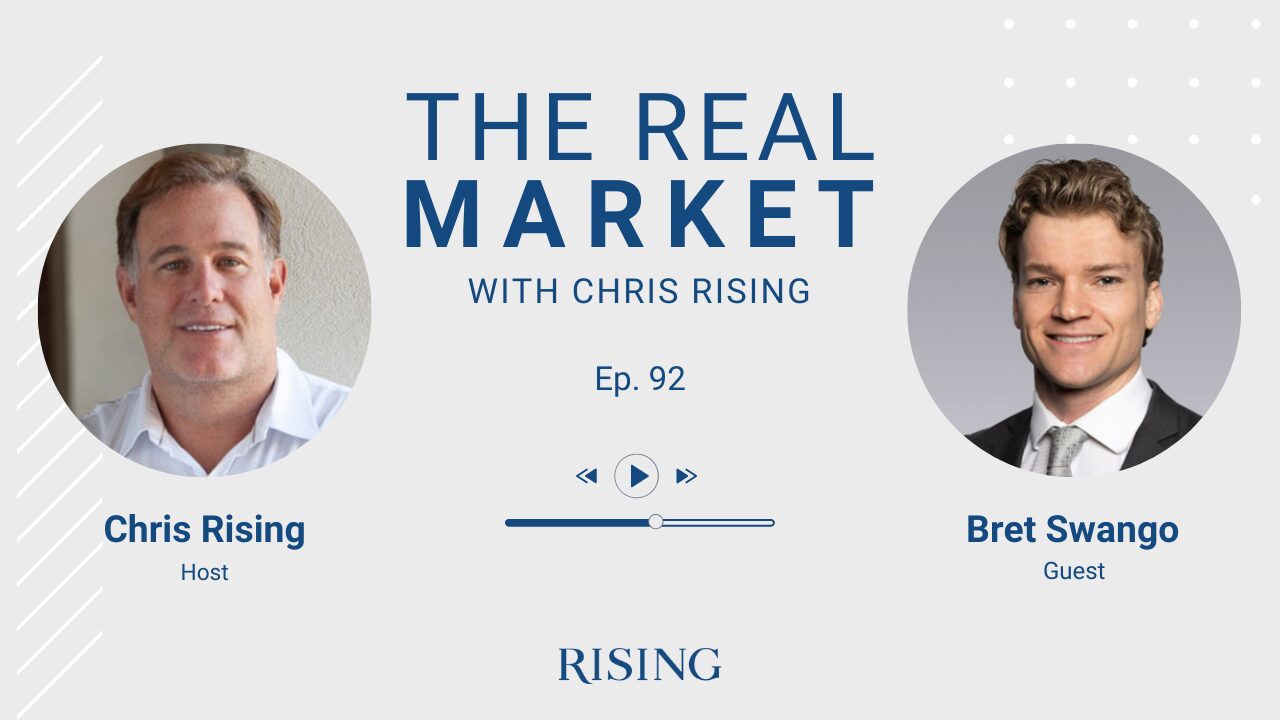
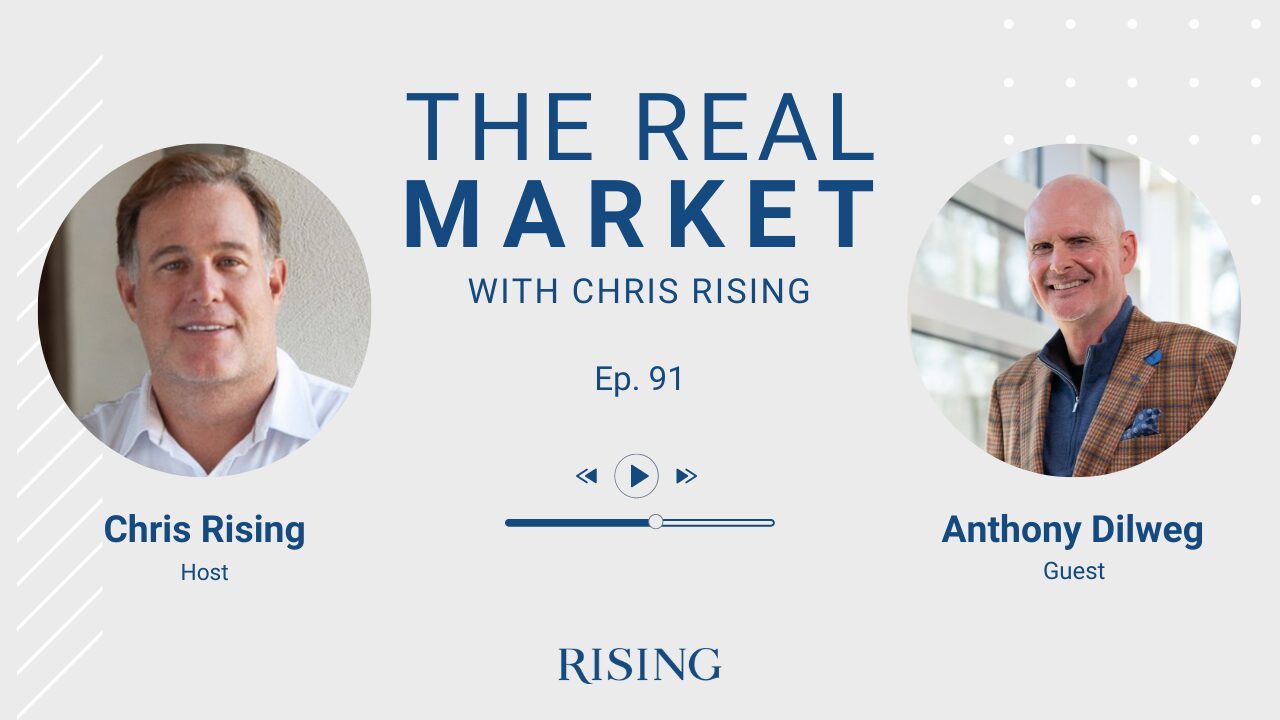
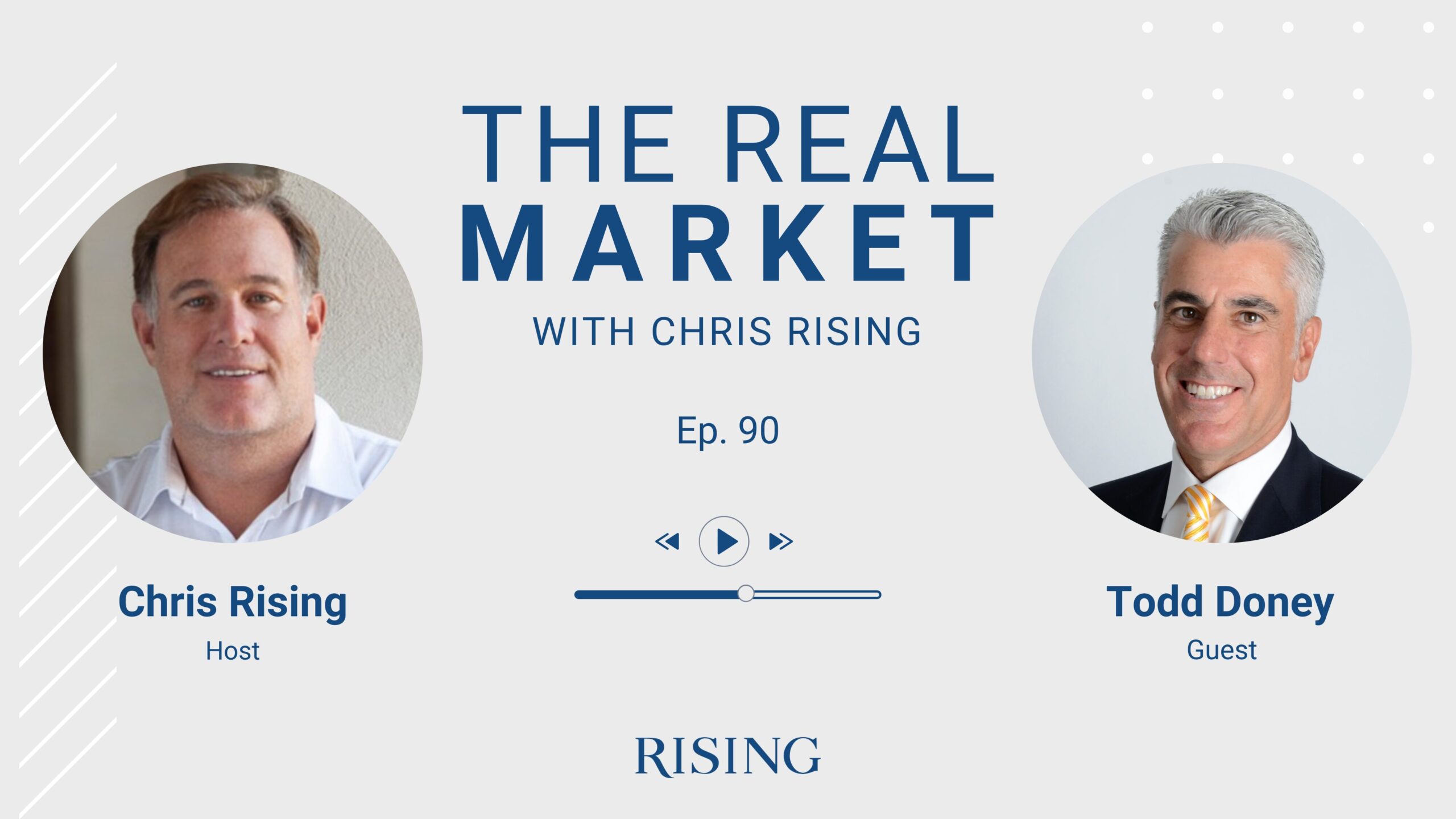
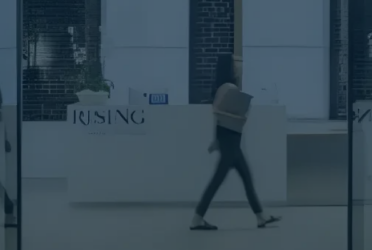
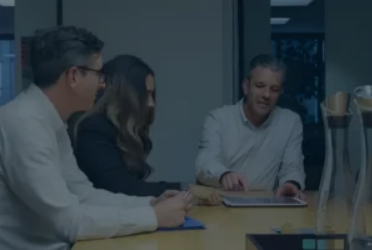
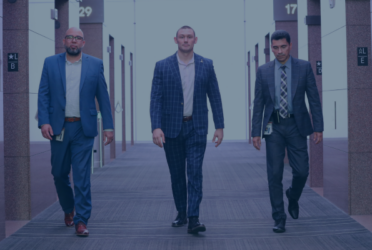
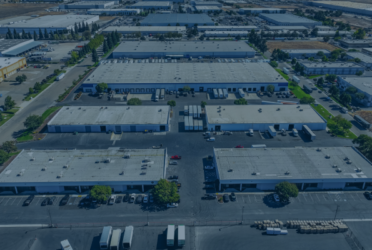
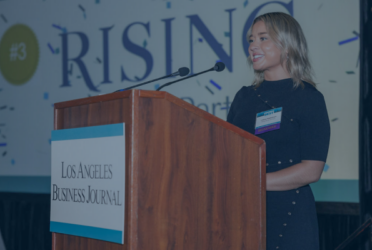
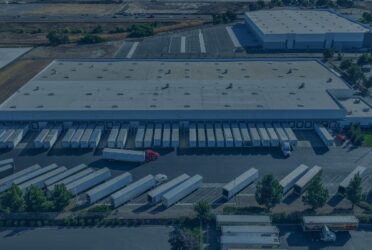
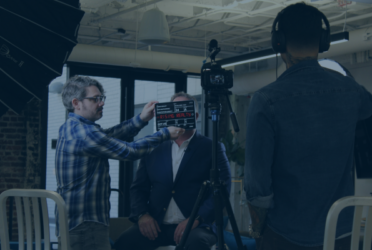
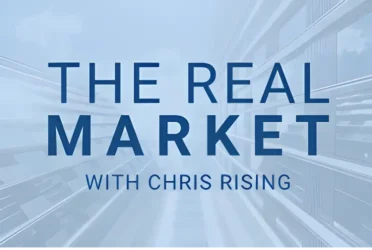 Podcast
Podcast